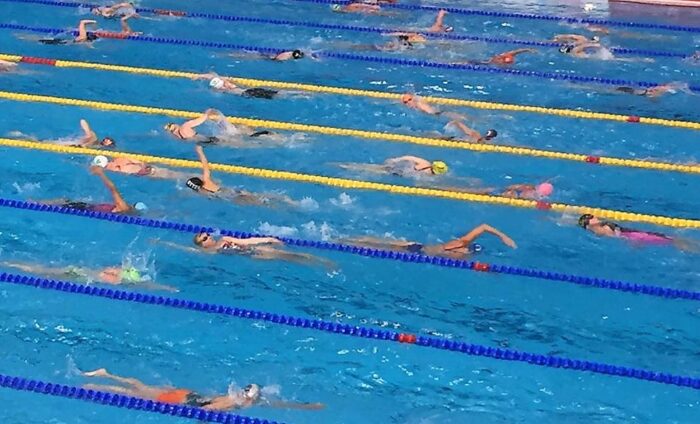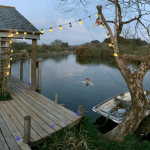
How to fall in love with swimming
Is this what your local pool looks like in January?
Seventeen days. That, apparently, is the time it takes most people to give up their new year resolutions. Part of me is relieved. The January surge of eager swimmers causing over-crowding in my local pool will soon be over and I can continue swimming as usual. But I’m also disappointed, and a little frustrated. Isn’t it a little sad that so many people would like to become swimmers but don’t manage it and therefore miss out on amazing swimming experiences?
Regular swimmers know that swimming improves the quality of their lives. Swimmers swim because it makes them feel good, both while they are doing it and while going about their daily tasks. Swimming is not a chore that somehow needs to be fitted in to your already hectic schedule, but an indulgence that you fight to make time for. There is even guilt attached to “swimming too much”!
One problem is that it takes time for swimming to feel good. If you’ve been out of the water for an extended period, those first few weeks of swimming when you return are mentally and physically challenging. The water is heavy, your arms won’t do what you want them too, you struggle to find a comfortable breathing pattern, you have no rhythm, and you’re so slow! If you have a history of swimming, you will understand that this is temporary, and that helps motivate you to continue. You have to get past the unpleasantness hump. But what if you have never got past this stage? What if you have never had an enjoyable swimming experience? You might think swimming is always hard.
It doesn’t help that exercise in general is frequently portrayed as something onerous. The word ‘exercise’ has connotations of doing dull but necessary things. We talk about ‘exercise regimes’. Yuck. It gives the impression that those of us who do swim (or run or cycle) frequently are somehow disciplined and virtuous. But it’s not like that. There is joy in movement and activity, especially for movement in water. Most of us who swim frequently do it because we love it, not because we have iron willpower.
The secret to sticking with swimming then, is not to think about it as something you ought to do, but as something you love. If you’re just getting into swimming after the new year or returning after a long break, the trick is to make the unpleasantness hump as small as possible so you can quickly discover the joy of being in the water. Here are a few ideas on how you might do this:
- Start with just the intention to enjoy swimming, not to achieve some amazing swimming goal. Save setting those big goals until you don’t want to stop.
- Also, do not start swimming to “get fit” or “to lose weight”. Just swim to swim. Fitness will follow automatically and if you become a long distance swimmer you may decide you don’t want to lose weight anyway.
- Initially, don’t count lengths or circuits or measure your distance. Just swim for as long as you feel like.
- Don’t swim continuously. If you’re in a pool, stop at the end of each length. Reflect on what you’ve just done and think what you can improve on your next length. Focus on that and then repeat.
- Remember that swimming faster comes from two things: better technique and fitness. Of those, technique is by far the most important, so put your effort into that. Make your swims relaxed and enjoyable learning experiences rather than tests of your physical capabilities.
- Make swimming a social thing. Find people to swim with. Talk to the other swimmers. Join a club.
- If you swim in the mornings, make the commitment the night before and get your stuff ready. However much you come to love swimming, it’s unlikely you will spring enthusiastically out of bed in the cold, dark months of the year. When the alarm goes off is not the time to decide whether or not to go. Operate on auto-pilot until you get in the water.
- Finally, discover and explore the world of outdoor swimming. We (obviously) recommend reading Outdoor Swimmer magazine each month.







